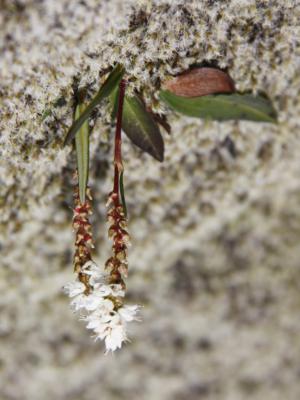Alpine bistort
(Bistorta vivipara)

Description
Persicaria vivipara is a perennial herbaceous flowering plant in the knotweed and buckwheat family Polygonaceae, commonly known as alpine bistort. Scientific synonyms include Bistorta vivipara and Polygonum viviparum. It is common all over the high Arctic through Europe, North America, and temperate and tropical Asia. Its range stretches further south in high mountainous areas such as the Alps, Carpathians, Pyrenees, Caucasus, and the Tibetan Plateau. Alpine bistort is a perennial herb that grows to 5 to 15 cm (2 to 6 in) tall. It has a thick rhizomatous rootstock and an erect, unbranched, hairless stem. The leaves are hairless on the upper surfaces, but hairy and greyish-green below. The basal ones are longish-elliptical with long stalks and rounded bases; the upper ones are few and are linear and stalkless. The tiny flowers are white or pink in the upper part of the spike with five perianth segments, eight stamens with purple anthers and three fused carpels. The lower ones are replaced by bulbils. Flowers rarely produce viable seeds and reproduction is normally by the bulbils, which are small bulb-like structures that develop in the axils of the leaves and may develop into new plants. Very often, a small leaf develops when the bulbil is still attached to the mother plant. The bulbils are rich in starch and are a preferred food for rock ptarmigans (Lagopus mutus) and reindeer; they are also occasionally used by Arctic people. Alpine bistort flowers in June and July.
Taxonomic tree:







